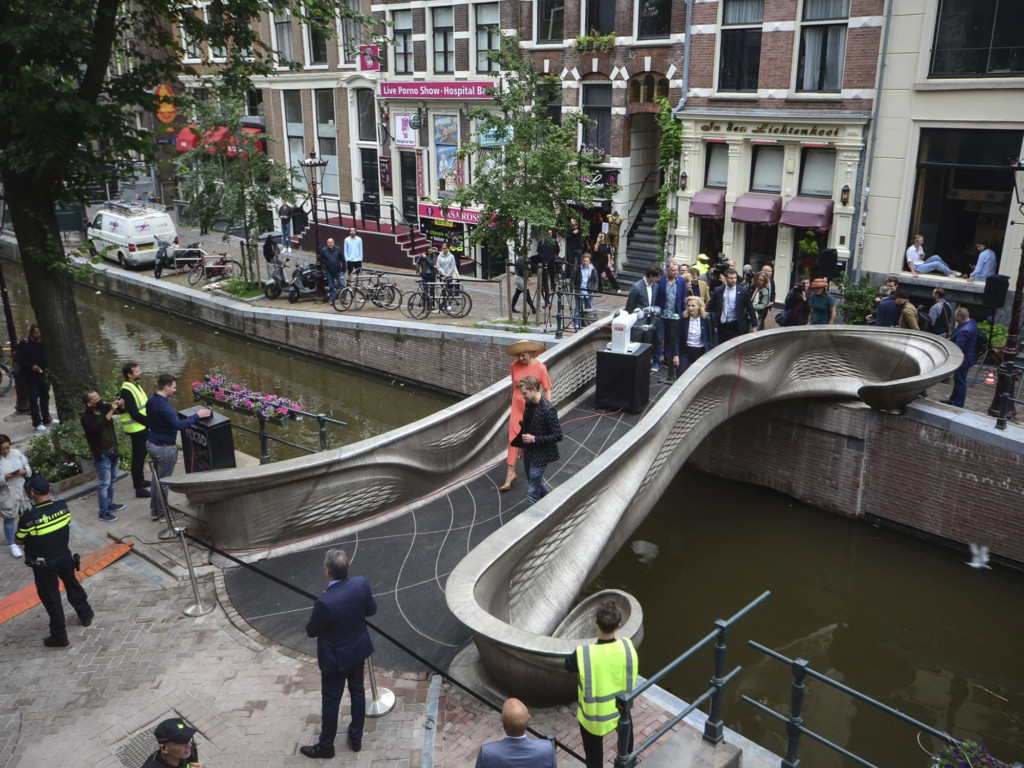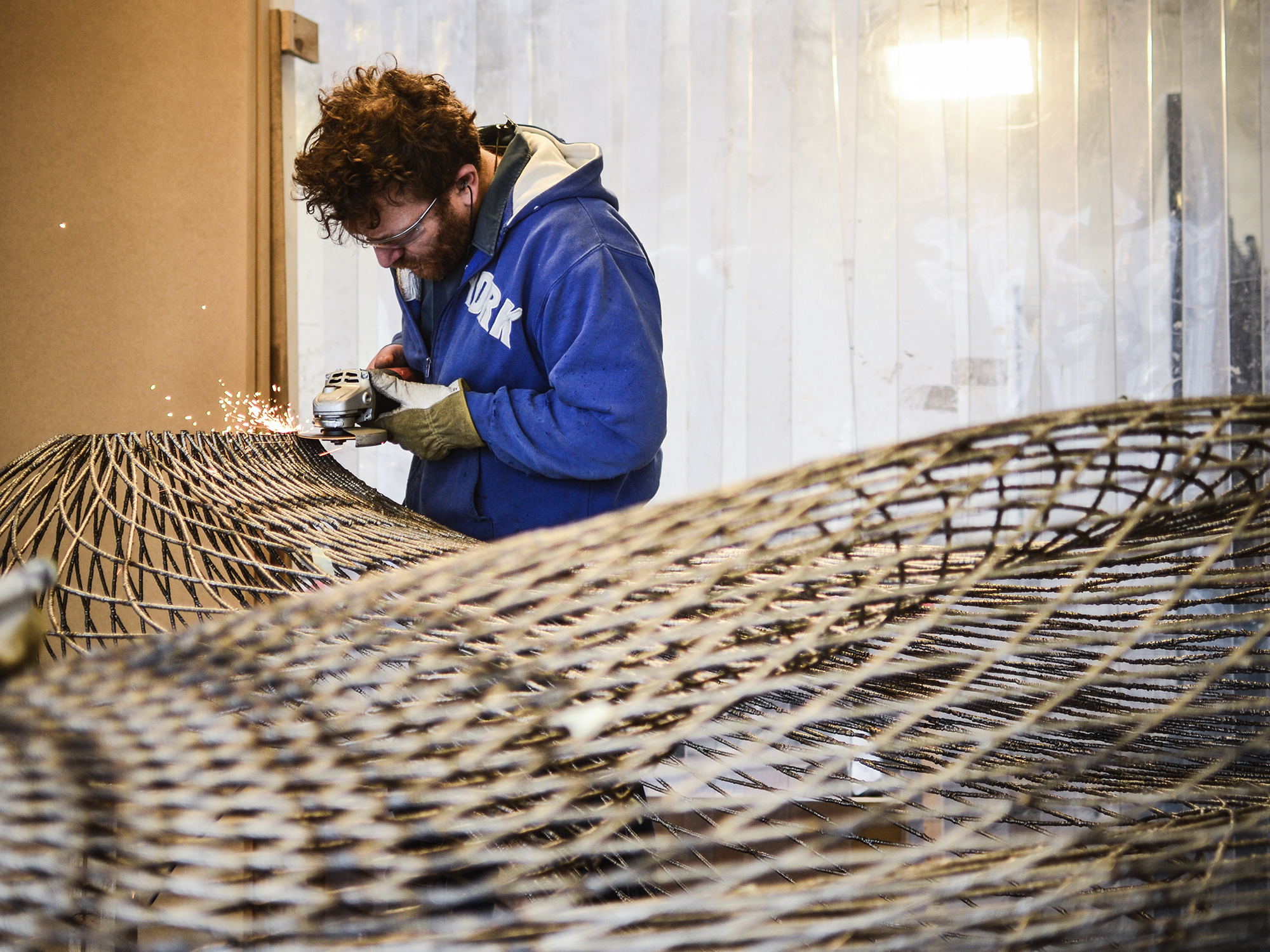“When scientists make use of the freedom and emotional creativity of artists, and artists make use of the skill and discipline of scientists, great things can happen.” — Joris Laarman
MX3D
Designs are often described as “drawing in space,” but Laarman is the first to actually achieve that goal. His Dragon Bench is made with a newly developed robotic technology called MX3D, which “prints” a form by depositing small amounts of molten metal along linear toolpaths. This allows for a freely composed structure, which supports itself as it is constructed. Laarman and his team at MX3D – now constituted as a separate engineering company – have also created an entire footbridge for Amsterdam using the technology. Such works are the most dramatic proof so far that we are experiencing a new industrial revolution, in which digital and analogue combine.
Various versions of Laarman’s Dragon Bench are in the permanent collection of the High Museum of Art, Atlanta, the Groninger Museum, the Netherlands, the Houston Museum of Fine Arts, USA and the National Gallery of Victoria, Melbourne.
Dragon Bench debuted at Friedman Benda exhibition “Joris Laarman Lab: Bits and Crafts“, 2014:
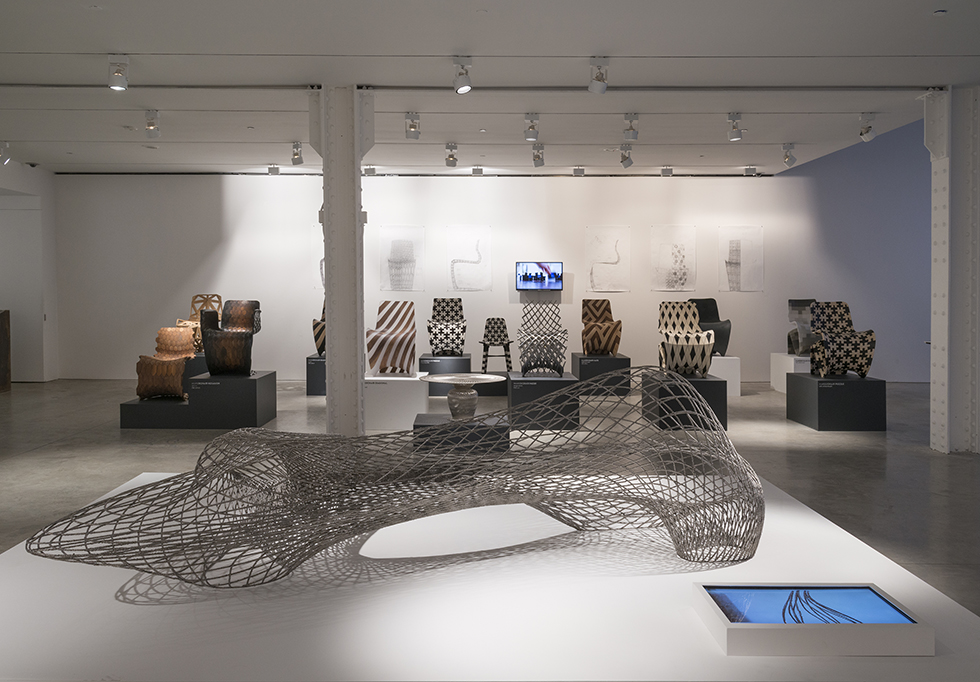
Dragon Bench was included in the traveling exhibition “Joris Laarman Lab: Design in the Digital Age,” 2015-2018. Installation views from two of the venues, Groninger Museum and Cooper Hewitt Smithsonian Design Museum:
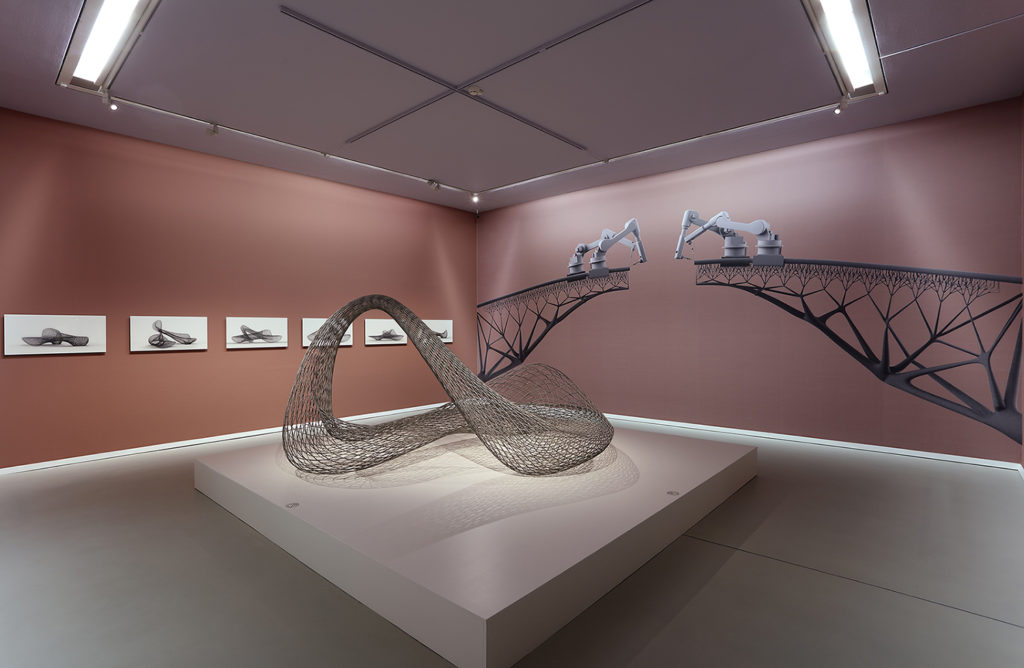
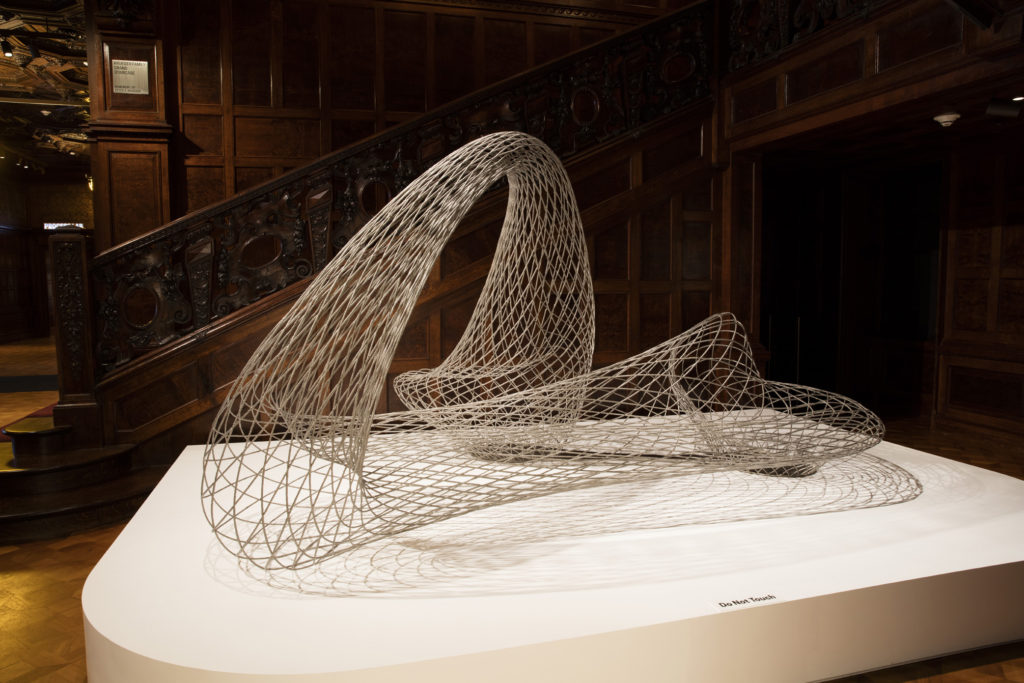
Joris Laarman’s MX3D Smart BRIDGE unveiled in Amsterdam as the first 3D printed steel bridge in the world:
